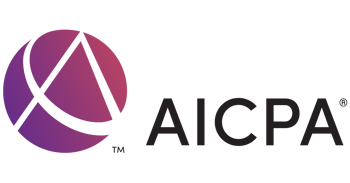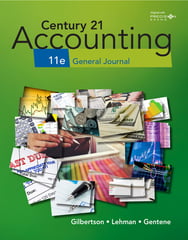Business Education | Marketing | Finance | IT & Media
High School Accounting: 4 Top Curriculum Options
Coming from a family of educators, Brad knows both the joys and challenges of teaching well. Through his own teaching background, he’s experienced both firsthand. As a writer for iCEV, Brad’s goal is to help teachers empower their students by listening to educators’ concerns and creating content that answers their most pressing questions about career and technical education.
Accounting is one of the most desired business professions that students can choose to pursue after graduating from high school. After all, accountants are skilled financial professionals that are constantly in demand to work for businesses, nonprofits, and even the government.
But without a solid foundation of accounting principles, students won’t be ready for the advanced coursework that will prepare them for careers in the field.
In this article, you’ll learn about four of the best high school accounting curriculum options:
1. Accounting Course from BusinessU
2. Basic Accounting Course from My Accounting Course
3. AICPA Accounting Program for Building the Profession (APBP)
4. Century 21 Accounting
After reading, you’ll better understand the types of accounting curriculum available to decide the best fit for your learners.
1. Accounting Course from BusinessU
BusinessU provides high school business education courses in several topic areas, including marketing, entrepreneurship, finance, and accounting. They aim to offer a standards-aligned curriculum that allows for a turnkey experience for teachers and their students.
The BusinessU Accounting Course contains enough instructional resources to teach accounting for an entire school year. With the course, teachers receive access to:
- 180 instructional days of material
- 81 lessons
- 239 exercises
- 698 assignments
Teachers also gain access to BusinessU’s substantial collaboration tools, student performance reports, and group work exercises. In addition, BusinessU integrates with standard classroom software such as Microsoft Teams, Google Classroom, Canvas, and other learning management systems.
With such an extensive set of teaching materials, teachers who choose BusinessU won’t need additional resources to teach accounting. The wealth of assignments and activities here ensures you won’t run out of material to teach.
One downside is that BusinessU doesn’t disclose pricing on its website, so you’ll need to contact the company directly for more information.
Ultimately, teachers who want a full digitally-based accounting curriculum could be successful with BusinessU’s expansive course offering.
2. Basic Accounting Course from My Accounting Course

The Basic Accounting Course from My Accounting Course is a series of nine lesson plans for teaching high school accounting. It’s ideal for an elementary accounting introduction in a high school business education class.
My Accounting Course’s lessons include:
- Financial Accounting Basics
- Accounting Principles
- Accounting Cycle
- Financial Statements
- Financial Ratios
- Assets
- Current Assets
- Cash and Cash Equivalents
- Accounts Receivable
Each lesson comes with a series of charts, graphs, and other visuals that ensure your students have a positive experience while learning the basics of accounting. These instructional aids can keep your students engaged and help them retain the material they’ve learned.
This Basic Accounting Course is free, giving introductory accounting teachers a great place to start.
Overall, there is a surprising amount of information here for a fundamental accounting resource. Most teachers will find lessons and activities to help fill gaps in their existing curriculum.
However, there isn’t enough material here to teach an entire standalone course dedicated to accounting. In addition, since the resources only pertain to basic accounting, they aren’t a good fit for advanced accounting students.
3. AICPA Accounting Program for Building the Profession (APBP)

The Accounting Program for Building the Profession (APBP) is a high school accounting program from the American Institute of Certified Public Accountants (AICPA). AICPA is a reputable professional organization that sets academic standards for Certified Public Accountants (CPAs).
The Accounting Program for Building the Profession is designed to train students in higher-level accounting while still in high school. Through a two-semester, upper-level program, students learn managerial and financial accounting skills that are vital to success at the next level.
While this program requires teachers to receive professional development, the training is free and could meet your school’s continuing education requirements.
When you complete training, you receive access to a host of high school accounting curriculum materials:
- A textbook, teacher notes, and PowerPoint presentations
- Accounting lesson plans and assignments
- Pre-written-exams with answer keys
- Refresher videos and webcasts
- Implementation assistance
- Continuous support from the AICPA and APBP trainers
Receiving specialized training to teach higher-level accounting courses could be time-consuming, but teachers who complete the program receive a wealth of resources for free.
They’ll also be able to teach more classes and engage more students than a teacher in a typical, introductory-level course. If you’re looking to go further with your high school accounting students, the APBP could give you the structure and resources you need to be successful.
4. Century 21 Accounting Textbook

Century 21 Accounting: General Journal is a popular high school accounting textbook by Claudia Bienias Gilbertson and Mark W. Lehman. Published by Cengage, Century 21 Accounting is now in its 11th edition, which appeared in 2019.
Unlike other accounting resources, this textbook is explicitly designed for a high school audience and provides a step-by-step introduction to many of the core concepts surrounding accounting. Unlike other curriculum resources, this textbook spends more time on basics like financial statement analysis.
Century 21 Accounting features these 24 chapters:
- Starting a Proprietorship: Changes That Affect the Accounting Equation
- Analyzing Transactions into Debit and Credit Parts
- Journalizing Transactions
- Posting to a General Ledger
- Cash Control Systems
- Work Sheet and Adjusting Entries for a Service Business
- Financial Statements for a Proprietorship
- Recording Closing Entries and Preparing a Post-Closing Trial Balance for a Service Business
- Accounting for Purchases and Cash Payments
- Accounting for Sales and Cash Receipts
- Accounting for Transactions Using a General Journal
- Preparing Payroll Records
- Accounting for Payroll and Payroll Taxes
- Accounting for Uncollectible Accounts Receivable
- Preparing Adjusting Entries and a Trial Balance
- Financial Statements and Closing Entries for a Corporation
- Financial Statement Analysis
- Acquiring Capital for Growth and Development
- Accounting for Plant Assets, Depreciation, and Intangible Assets
- Accounting for Inventory
- Accounting for Accruals, Deferrals, and Reversing Entries
- End-of-Fiscal-Period Work for a Corporation
- Accounting for Partnerships
- Recording International and Internet Sales
Century 21 Accounting is priced at $42.99 for a six-month eBook subscription.
Because it’s designed exclusively for a high school audience, Century 21 Accounting doesn’t go into as much depth as some advanced accounting curriculum resources. But if you’re teaching an introductory course, that could be a good thing.
Teachers who want to spend more time on fundamental concepts in their accounting lesson plans will do well when teaching from this textbook. However, if you’re looking for more advanced material, consider materials that cover higher-level accounting concepts.
Find the Right High School Accounting Curriculum for Your Students
Finding the best high school accounting curriculum for your students can take time and effort.
What you choose will depend on whether you are covering basic accounting or a more advanced accounting course and if you prefer a traditional textbook or a digital alternative.
But if you’re looking for a full high school accounting curriculum covering Accounting I and II, consider iCEV.
The iCEV Accounting I and II courses are aligned to meet your standards for these important courses and include everything you need to engage your students in accounting.
To learn more about the iCEV accounting curriculum and if these courses could be right for your classroom, visit the business curriculum page. You’ll be able to explore each class in more detail to see if it meets your classroom needs.


